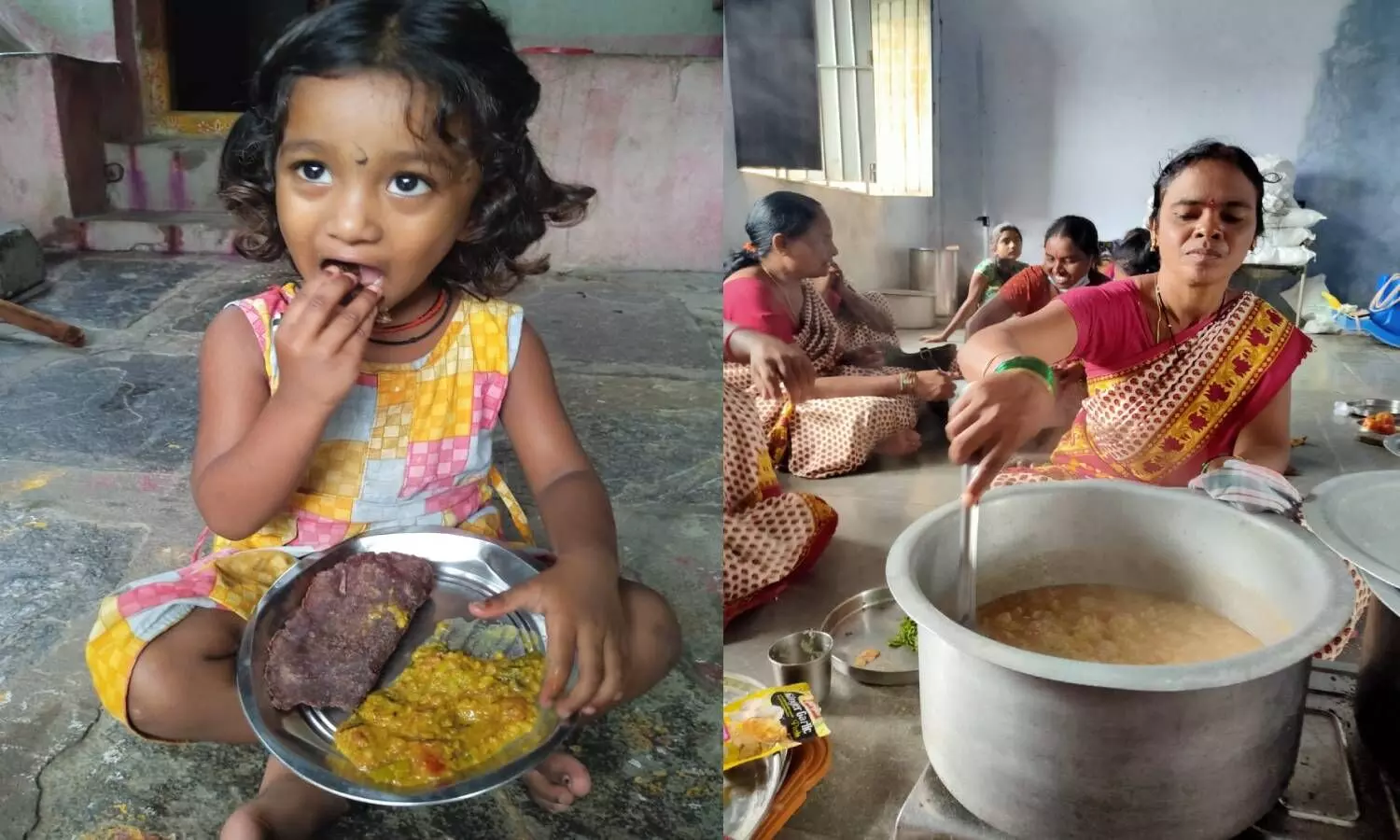Komaram Bheem Asifabad reviving millet culture to fight malnutrition
The ICDS with the support of NITI Aayog, WCD Department and WASSAN ngo is now trying to revive this millet culture to attain a larger goal of zero malnutrition in KB Asifabad district
By Nimisha S Pradeep
Hyderabad: Three-year-old Priyadarshini takes a bite from the brown roti given to her. She hardly knows that it's ragi roti since she is busy munching it delightedly. Like Priyadarshini, many children in Komaram Bheem Asifabad are now lucky to eat what their ancestors once ate. Or perhaps even luckier to eat delicacies like korralu upma, rich in protein made from foxtail millet, which is not even cultivated in the region now.
Traditionally millets were the staple food of tribals of KB Asifabad. Over the years, they moved to paddy and cotton cultivation. Most of them sold their produce to the government and lived on rice from the public distribution system. Now, in over 600 acres of land, different varieties of millets such as jowar, ragi, korralu, samelu and so on grow in KB Asifabad.
The Integrated Child Development Services (ICDS) with the support of NITI Aayog, WCD department and WASSAN NGO is now trying to revive this millet culture with the 'Decentralised Millets Mission' project to attain the goal of zero malnutrition in KB Asifabad district. "Our focus is to encourage people to include millets at least once in their daily diet," says Sadiya Ruksana, child development project officer, ICDS, KB Asifabad.
KB Asifabad, one of the aspirational districts identified by NITI Aayog to be high in malnutrition. A tribal native says, "Once we used to eat millets and we used to be strong, but our next generation is no longer consuming millets. So, they are becoming weak and succumbing to chronic diseases."
Interestingly, all the activities involved in the ICDS project - from production to processing to distribution - are carried out by the tribal residents and their self-help groups in the district. One of the highlights of this project introduced in August 2021 is the millet food festival conducted in Anganwadi. All the villagers gather at Anganwadi and are briefed about the different recipes and benefits of millets. "Not just ICDS officials and Anganwadi teachers but even the district collector goes from house to house to encourage parents to include millets in their regular diet," says K.B. Savitha, district welfare officer, KB Asifabad.
Currently 300 beneficiaries are there in the pilot project of which 200 are children between the age groups of two and six. In the next stage, they are planning to extend the project to 260 Anganwadi. "By December 2021, we are aiming to take the project to all the 973 Anganwadi in the district," adds Sadiya.
Besides the millet festival, the ICDS has also started observing SAM MAM day on Thursdays focusing on Severe Acute Malnutrition (SAM) and Moderate Acute Malnutrition (MAM). Every week, on Thursdays, the heights and weights of the children are monitored and necessary steps are taken for improvement.
As per NFHS-5 survey, 70 percent of the children in the age group of six months to 59 months and 67.3 percent of women in the reproductive age group of 15-49 are anemic in the district. Besides children, the ICDS project also aims to eliminate malnutrition in pregnant and lactating mothers.
"Today is the 66th day of introducing the project It's heartwarming to see children and elders alike enjoying the millet delicacies," smiles Sadiya.